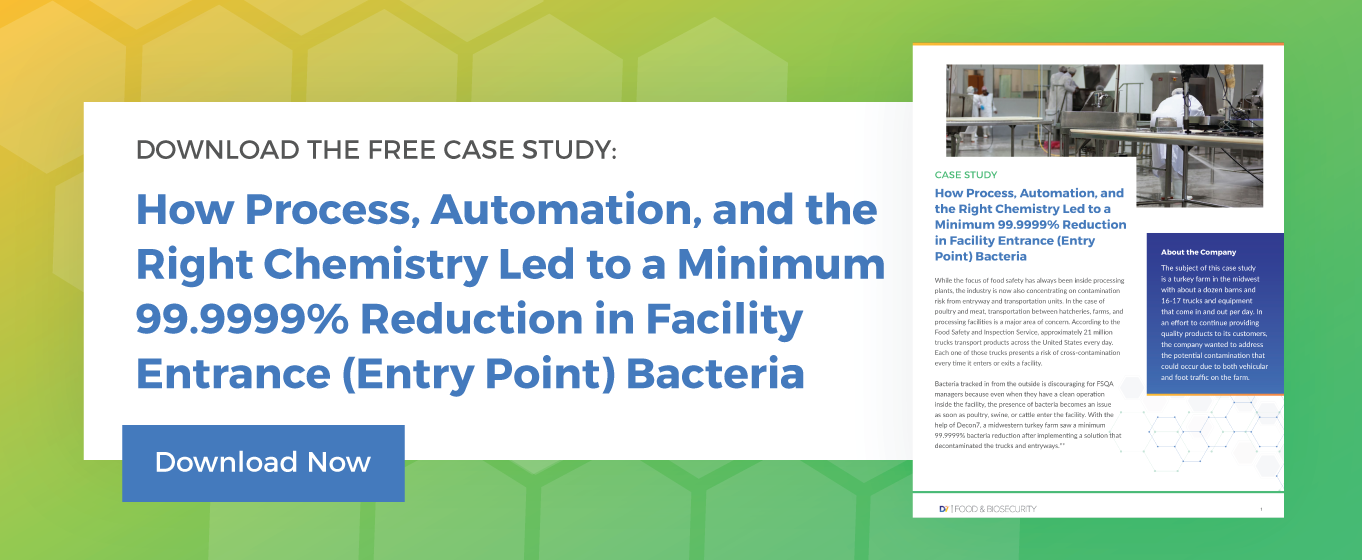Contamination is essentially the introduction of an unwanted element into an environment, whether through intentional or unintentional means, with potentially negative consequences. Contaminants can include a range of substances, such as bacteria, mold, poison, drugs, disease, and more. Depending on the context, the results can be devastating, including illness and death.
Once contamination has occurred, the process to remove it can be both costly and time-consuming, and in some cases, the area remains contaminated for generations. One of the biggest challenges related to contamination is preventing the spread of the unwanted agent. This can be achieved through decontamination processes and protocols that prevent people and equipment from transferring the agent from one location to another. Of course, prevention is the best scenario when contamination is a possibility.
Contamination from Bioterrorism
A room, a building, or even parts of a city can be intentionally contaminated through an act of terrorism. When the contaminant is a biological agent, such as bacteria, toxins, viruses, or fungi, it is known as bioterrorism. Examples of bioterrorism go back millions of years to when the Assyrians contaminated the water in enemy wells with a fungus. More recently, during World War II, the Japanese army committed bioterrorism by introducing plague-infected fleas into China.
Other examples of more self-contained incidents include when a religious cult released sarin gas into the Tokyo subway and when envelopes containing the toxin ricin were sent in the mail to politicians. When bioterrorism attacks occur, the immediately devastating effects get a lot of attention, but cleaning up the contamination can also take a long-term toll on the affected area and the people who live in and around it.
Contamination in Biosecurity
Contamination of the food supply is a concern for bioterrorism, but also an issue that farmers and ranchers must address on a daily basis. Produce and livestock farms can be contaminated with disease, bacteria, or fungi that have the potential to destroy crops and spread to other areas. A current global concern is the spread of African swine fever virus, a devastating disease that kills affected pigs and spreads quickly among herds.
Preventing contamination requires addressing it from multiple angles. Some steps to take include reducing the spread of disease through strict import regulations, training workers to understand how disease spreads, implementing daily and weekly disinfection protocols, and using entryway disinfection methods.
Contamination in Food Processing
Food processing facilities also present an opportunity for contamination, most often through cross-contamination. Cross-contamination occurs when a pathogen is transferred from one area to another. For example, the bacteria E. coli can be transferred from a food preparation area to a storage freezer, where it can then grow and contaminate other foods being stored there. Another example of contamination that can occur in personal kitchens is transferring bacteria found in raw meat to a different food preparation area on utensils that have not been properly cleaned.
The first line of defense against contamination in food processing is prevention, but bacteria are persistent and, when allowed to grow, can quickly spread and form biofilms. Once contamination has occurred, a deep cleaning effort that reaches every surface may be required.
D7 and Contamination
Cleaning up contamination requires a range of approaches, depending on the situation. D7 is a product that was originally developed to combat bioterrorism and save lives. Now it is also used to help prevent contamination in food processing and biosecurity applications. Using cutting-edge developments in chemical science, D7 capitalizes on the natural cleaning power of hydrogen peroxide to penetrate and disarm toxins at a molecular level. Learn more about how D7 has been used in the poultry industry in our case study, How Process, Automation, and the Right Chemistry Led to a Minimum 99.9999% Reduction in Facility Entrance (Entry Point) Bacteria.


